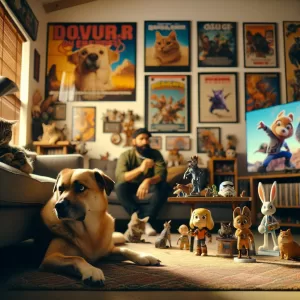The world of pet grooming is an artistic realm, a delicate interplay of style and functionality. The lion cut and the continental cut – two pet hairdos that have transcended trends, shaping our cultural vision of certain breeds – are ideal examples of this. These grooming styles, often considered mere aesthetic choices, carry a rich history and cultural significance that might surprise even the most devoted animal lovers.
The Lion Cut: A Necessity That Became a Style Statement
The lion cut, a grooming style most commonly associated with feline friends, especially Persian and Maine Coon cats, is a unique fusion of practicality and style. Contrary to what one might assume, the lion cut wasn’t born out of a desire to make house cats resemble their majestic wild relatives.
In reality, the lion cut was a response to a necessity. Historically, long-haired cats often suffered from matting and overheating, particularly in warmer climates. To tackle this, their bodies were shorn, leaving fur only around the head, feet, and tail tip – a look resembling a lion’s mane and tufted tail. The lion cut thus emerged as a functional solution, a testament to human ingenuity in animal care.
Over time, what was once a practical solution evolved into a cultural symbol. The lion cut has come to represent a sense of whimsy and boldness, a style statement that is as adorable as it is unique.
The Continental Cut: A Poodle’s Tale
On the other end of the spectrum, we find the continental cut, a grooming style that’s almost exclusively associated with poodles. Contrary to the lion cut’s utilitarian roots, the continental cut emerged from a mix of functionality and aristocratic style.
The continental cut’s origins can be traced back to the poodle’s working days when these intelligent dogs served as water retrievers. To aid their swimming while also protecting vital organs from the cold, certain parts of their bodies were shorn, while others were left with pom-poms of fur. This functional grooming gradually morphed into the distinctive continental cut we see today.
But the continental cut’s journey didn’t stop at mere practicality. When poodles became favored pets among European nobility, their unique grooming became a status symbol, a sign of elegance and luxury. The continental cut as we know it today is a vestige of this aristocratic influence, making poodles one of the most unmistakable breeds in the world.
The Cultural Significance: More Than Just a Haircut
While the lion cut and the continental cut started out as functional solutions, they have come to carry a deeper cultural significance. These grooming styles are more than just about keeping a pet cool or aiding their swimming; they have become an expression of our relationship with our pets, reflecting the evolving dynamics of human-animal coexistence.
The lion cut, for instance, signifies our ability to adapt and respond to our pets’ needs, even as it adds a dash of humor and creativity to our lives. The continental cut, on the other hand, is a symbol of our pets’ journey from being working animals to companions of luxury, reflecting societal changes and attitudes.
The Influence on Pop Culture: From Cartoons to Catwalks
The lion cut and the continental cut have not only influenced pet grooming trends but have also left their pawprints on pop culture. These styles have been featured in everything from classic cartoons to high fashion runways, influencing our perception of certain breeds and contributing to their popularity.
Cartoon cats with lion cuts or poodles in elaborate continental cuts have become staple characters, their distinctive looks adding to their charm. Similarly,
fashion designers have often used these cuts to make a statement on the runway, further cementing their place in our cultural landscape.
A Tale of Two Cuts
The lion cut and the continental cut, each with their unique origins and evolution, are fascinating examples of how culture shapes our interaction with our pets. They remind us that even in the seemingly mundane aspects of pet care, there is a story to be told, a cultural imprint to be found.
What started as practical solutions to specific problems has become a significant part of our shared cultural heritage. As we continue to snip and style our pets’ fur, we do more than just groom them. We participate in an ongoing cultural narrative, a tale of empathy, adaptation, and creativity – a tale as endearing as our furry companions themselves. So, the next time you see a cat sporting a lion cut or a poodle prancing in a continental cut, remember – you’re looking at more than just a stylish pet; you’re witnessing a piece of living, breathing culture.








